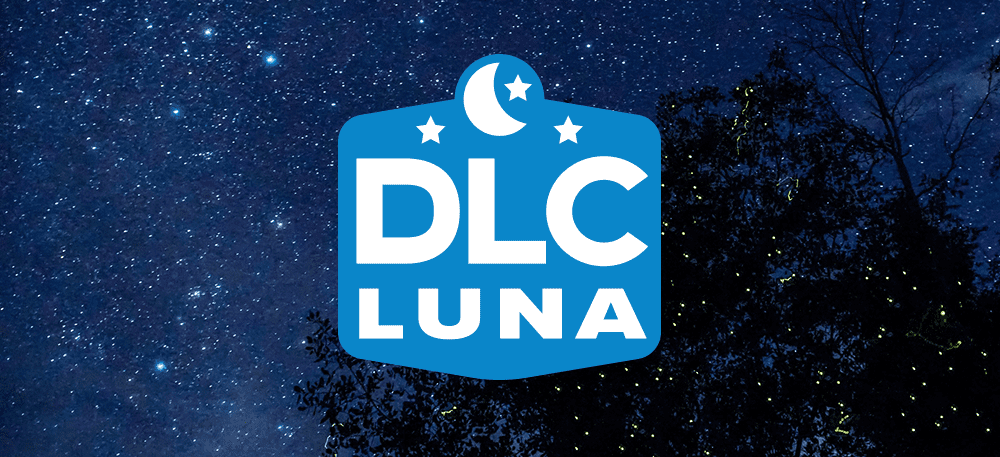Posted by Brianna Crandall — July 29, 2022 — The nonprofit DesignLights Consortium (DLC) has just announced the first products added to its LUNA Qualified Products List (QPL) after being tested and determined to meet the new LUNA Version 1.0 Technical Requirements for outdoor LED luminaires. Products on the LUNA Qualified Products List satisfy DLC’s Solid-State Lighting V5.1 Technical Requirements and meet added criteria meant to limit light pollution and other environmental harm.
 DLC released LUNA V1.0 in December and began accepting applications from solid-state lighting (SSL) manufacturers interested in qualifying their products in April. Eighteen specific 3000K models of the XSPW Version B Wall Mount Luminaire, manufactured by Cree Lighting, are the first outdoor LED products published on DLC’s LUNA QPL following testing of product performance and attributes by an accredited lab and rigorous review by DLC staff.
DLC released LUNA V1.0 in December and began accepting applications from solid-state lighting (SSL) manufacturers interested in qualifying their products in April. Eighteen specific 3000K models of the XSPW Version B Wall Mount Luminaire, manufactured by Cree Lighting, are the first outdoor LED products published on DLC’s LUNA QPL following testing of product performance and attributes by an accredited lab and rigorous review by DLC staff.
DLC Executive Director and CEO Christina Halfpenny remarked:
The DLC congratulates Cree Lighting for its leadership and commitment to quality outdoor lighting that works for people and our natural environment. We are very proud to have the LUNA program as a resource for the energy efficiency industry, and we look forward to working with the lighting community to populate the LUNA QPL with products that are energy efficient, ensure appropriate nighttime visibility for people, and work to mitigate the growing problems associated with light pollution.
Jonathan Vollers, Cree lighting director of Engineering Services, commented:
The addition of DLC’s LUNA program allows us to demonstrate to our customers and industry stakeholders that energy savings and reducing light pollution are not mutually exclusive. We believe LUNA provides the industry with a complementary tool, along with good lighting design, to help achieve the IES and IDA’s Five Principles for Responsible Outdoor Lighting. We are proud to do our part with solutions that meet the economic and energy goals of our customers, while positively influencing the night sky we all share.
Searchable on the SSL Qualified Products List (QPL), LUNA-qualified products are eligible for energy efficiency rebates and incentives designed for SSL V5.1 products. LUNA sets performance requirements for specific categories of outdoor LED fixtures, so that municipalities, energy efficiency programs and other outdoor lighting decision-makers can better support their energy reduction goals and abide by dark sky policies and ordinances.
LUNA also helps specifiers fulfill the light pollution and trespass requirements of LEED and WELL building programs, and helps projects follow application guidance in the joint International Dark Sky Association-Illuminating Engineering Society Model Lighting Ordinance.
In addition to meeting DLC’s SSL V5.1 efficacy thresholds, LUNA-qualified products must comply with additional dimming, control and shielding requirements to ensure efficient use of lighting energy. The LUNA program also introduces requirements for light distribution, correlated color temperature and dimming controls to reduce light trespass and sky glow, while supporting light installations that both provide appropriate visibility for people and meet recommended methods and voluntary guidelines for dark-sky best practices.
DLC notes, however, that the technical requirements apply only to white-light LED outdoor products, which do not include some types of outdoor lighting. For example, non-white (amber) luminaires, which may be appropriate for settings such as environmentally sensitive areas, are excluded from LUNA. This is because of inconsistencies in terminology and performance due to the lack of standardized metrics, which are still in development for non-white light. For more information on this, see DLC’s recent “Non-white Light Sources for Nighttime Environments” whitepaper, and a related FAQ document.
DLC members can access the LUNA Qualified Products List (QPL) on the DLC website. The nonprofit collaborates with utilities, energy efficiency programs, manufacturers, lighting designers, building owners, and government entities to create rigorous criteria for lighting performance that keeps up with the pace of technology.




